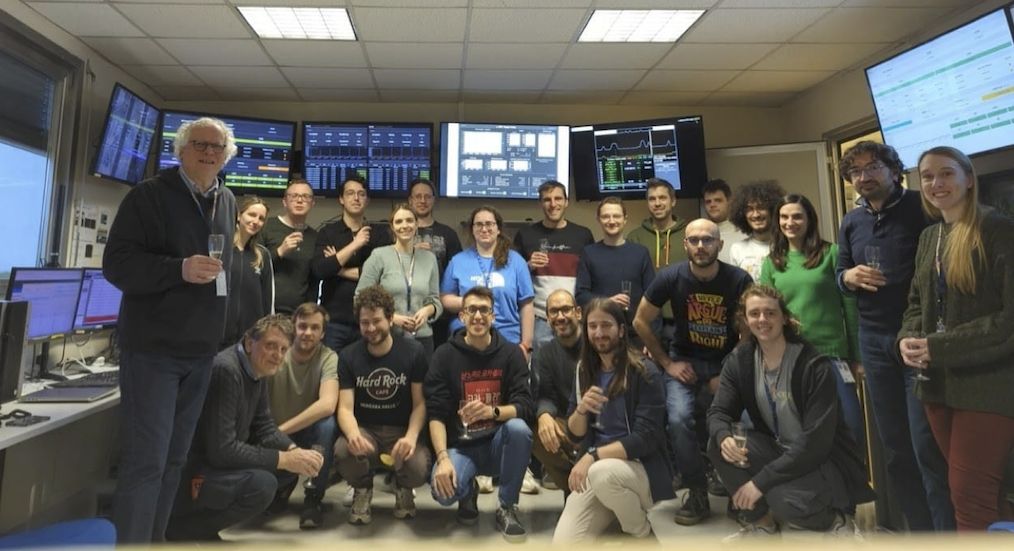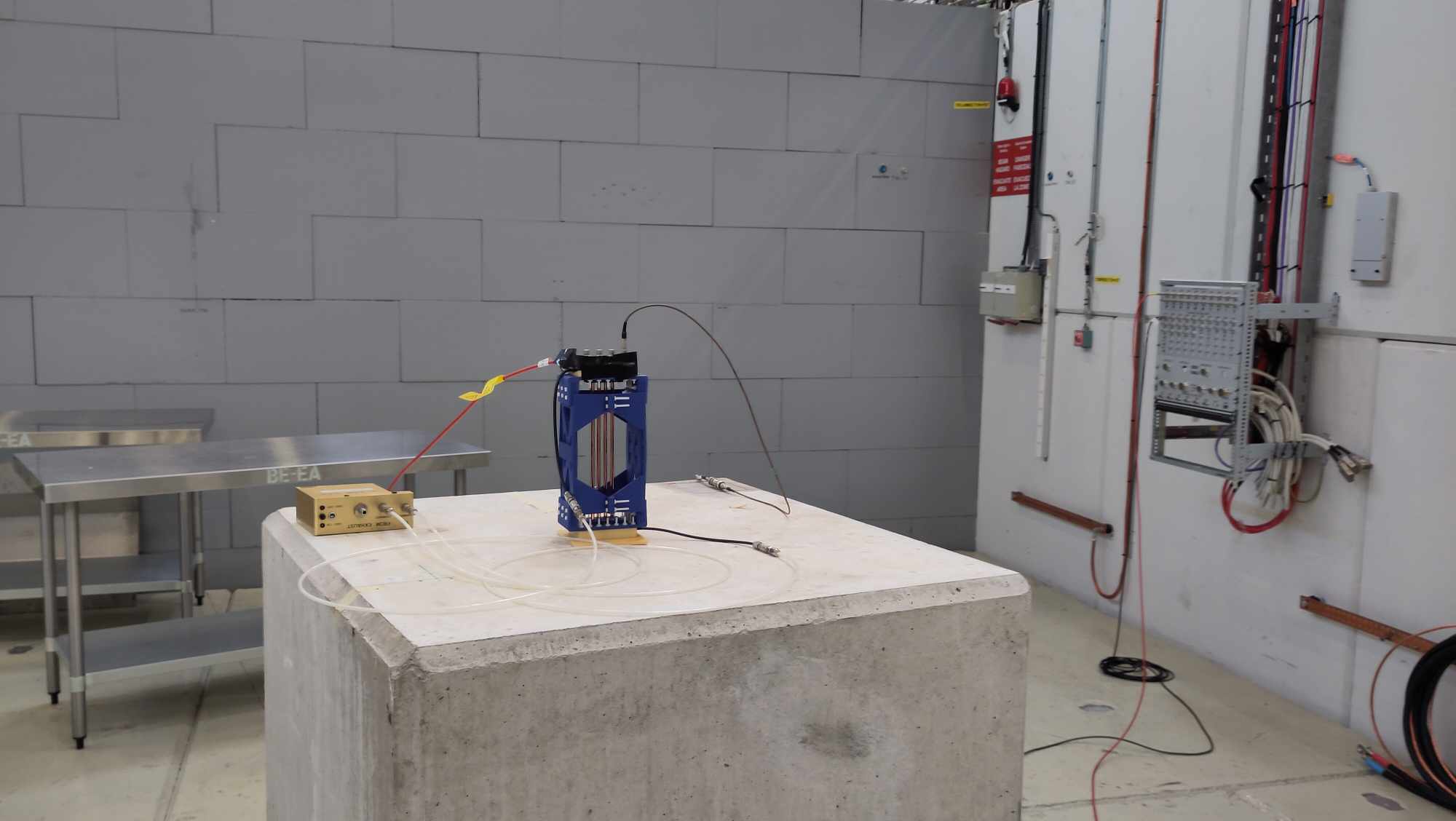PS/SPS User Meeting
Minutes of Meeting
The template for the minutes of meeting for the weekly PS & SPS users meeting can always be found using this link: https://codimd.web.cern.ch/0aHs5uqmSPuII76-SaaQdg
Please pre-fill them before the meeting with a summery of your activities!
PS-SPS Users Meeting for Week 12 held on March 20th 2025
Coordinator for this week: Martin Jäkel
- Updated user schedule v1.0.0 on availablke for PS
Updated user schedule v1.0.0 for NA available tomorrow.
- Injector schedule (v1.1) for 2025 is available here: https://edms.cern.ch/document/3057281/latest
and has been APPROVED in yesterdays IEFC.
EuroLabs : please urgently submit a list of your publications to Tanya if you profited from EuroLabs funding.
News from the PS & SPS Physics Coordinator
M.R. Jäkel, P. Martinengo
Proton Run 2025
- Physics Start p+ EA & nTOF Wednesday 19.03.2025
- Physics start Isolde Friday 28.03.2025
- SPS NA Physics start EHN1 Monday 14.4.2025
- SPS NA Other Physics start Thursday 17.4.2025
Proposal : First User Meeting 13.3.2025
Reminder: Beam time exceeding the limits of 2 weeks PS beam time and 1 week SPS beam time per year need the approval of one of these CERN committees: SPSC, LHCC, DRDC, INTC, RB or IEFC. Consider joining a DRD collaboration, if you require more beam time.
Target intensities:
See below or via ASM (accessible from within the CERN network).
News from the Facilities Operations Meeting (FOM)
Upcoming SPS MDs next weeks :
https://be-dep-ea.web.cern.ch/content/md-planning-north-area
Dedicated SPS MDs - if not anounced differently - are taking place from 8:00 to 18:00
PS Machine Report (Marc Delrieux)
- all 3 EAST beams ready but T10 collimator needs to be exchanged :
- T9, T10/11 stopped 19.03
- T8 stopped 20.03 5 am
- 3 days intervention, beam hoped for sunday 20.03
- TOF operational, providing beam wrt their requests (no parasitic yet since EAST is stopped)
- Issue until monday 17.03 with semgrid 484 acquisition, a software trigger was left after ISTs
- MTE core low intensity sent to SPS
- MTE 5 turns ready
Safety (M. Jankowski)
- Thank you for submitting the ISIEC requests (https://ep-th-safety.web.cern.ch/isiec-safety-clearance)
- A slot is reserved for safety inspections in EHN1 on Wednesdays between 3 pm and 5 pm
- Please wear your PPE (safety shoes, helmet, dosimeter)
n_ToF (A.Manna and Paolo M. Milazzo)
2025 data taking campaign officially started on 19.03
- EAR1: Test of an Annular Silicon detector for (n, cp) reactions
- EAR2: Ionization chamber for fission studies; test on a 235U sample
- NEAR: Study of radiation hardness for diamond detector and cycling proof of concept for activation measurements

East Area Beam Status (B. Rae)
General: The first collimator of T10 (T10.XCSV010) was found to be stuck in beam on Tuesday (18th March) evening. Following interventions on Wednesday it was confirmed to be a mechanical issue requiring exchange of the collimator for full functionality. The collimator is in the mixed area and the roof shielding blocks need to be removed for the exchange, which is a 3-day intervention. As this is an essential element for operation, the intervention needs to be done as soon as possible.
Transport will start on Thursday 20th March at 6:00 a.m aiming to remove the shielding blocks until Friday morning. The exchange of the collimator is planned on Friday afternoon and the reinstallation of the shielding by Saturday end of the day. Alignment and reconnection of the vacuum is planned for Sunday. If the reinstallation of the blocks cannot be completed by Saturday, we will have to wait until Monday for the completion.
No beam can be sent to the East Area (T8, T9, T10, T11) until the end of the intervention. More news to be expected end of Thursday after the first day of intervention by transport.
There is no blocked access to the East Area building but please be careful during the operation of the crane staying clear of their movement.
Big thanks to everyone for their fast reaction and incredible support and availability.
T09: Beam commissioning completed on time and beam handed to WCTE on 17th March. T09 switched to the low momentum configuration on 19th March.
T10: Beam commissioning completed and collimator fault happened near the end of commissioning. A few minor beam checks will done in the following weeks in collaboration with BI-STRAW.
T11: All beam settings checked and validated. Alternative optics investigated for smaller beam spot at P349/P371 location.
East Area Users Tour de Table
T8 Main: IRRAD/CHARM (F. Ravotti)
OP handed over the beam on Tuesday 18th - started IRRAD / CHARM commissionig (DAQ setup, Al-foils dosimetry, etc.). Few measurements performed with beam until Wednesday evening and now stop for the T10.XCSV010 issue. We might delay the start of the user run depending on when the beam will become available.
T9 Main: WCTE (B. Smithers and D. Karlen)
Summary
- Planning to start low energy runs once beam tuning completes; DAQ/trigger configured
- Some beam data aleady taken with both the water Cherenkov volume and the upstream beam monitor during the tuning
- Stress test of the readout ongoing
WCTE beam line monitors
- WCTE beamline monitor systems are installed and commissioned. We have used the VME-based stand-alone data acquisition with beam-tuning beams in the past week to adjust HV settings i(to equalize gains). We have also exercised the VME-based trigger system and set the required delays and gates for different trigger configurations.
- Beamline monitor data with beam-tuning beams have also been collected with the full WCTE DAQ. We have confirmed that timing resolution is better than 1 ns. Time offsets between signal channels are stable.
- We were scheduled to have final beam tuning on Wednesday afternoon, using the stand-alone readout of the beamline monitors. That is now postponed.
WCTE water Cherenkov detector
- About 83 of our multi-PMT modules are functioning. Gains have been equalized.
- Timing and other calibrations have been performed. Timing calibration determines the time offsets between electronics channels, by flashing light sources at known locations. Using the embedded LEDs in the modules allows for many paths to calculate the constants. The time offsets between channels are determined to better than 1 ns with these data.
- Our data acquisition system is not yet able to cope with the high data rates experienced in our current mode of operation, in which the multi-PMTs self-trigger. Work continues to find the bottlenecks.
- In absence of beam, we can exercise the data acquisition system using a flashing light source that bursts, to mimic the 0.5 second beam bursts.
- Once a custom electronics card is completed (in one or two weeks), we plan to operate in another mode, in which the modules only send data when signaled by an external trigger signal, generated by coincidence in the beamline monitors. That will allow us to control the data rates more effectively.
T10 Main: BI STRAW (Robert Garbrecht Larsen - represented by Laurie)
Experiment was installed quickly and effieciently with assistance from the infrastructure team(concrete block) and gas team(50/50 Ar/C02), a big thank you to both of those teams for organising everything on short notice. The setup passed the safety inspection Wednesday morning, and we are now ready to take data when the beam is back.
North Area Beam Status (B. Rae)
Hardware commissioning is on-going.
DSO tests planned next Monday and Tuesday No access in any PPE zones until further notice.
North Area Users Tour de Table
AoB
Minutes by the respective speakers, edited by E. B. Holzer, M. Jäkel, T. Shulha, and M. Schwinzerl
